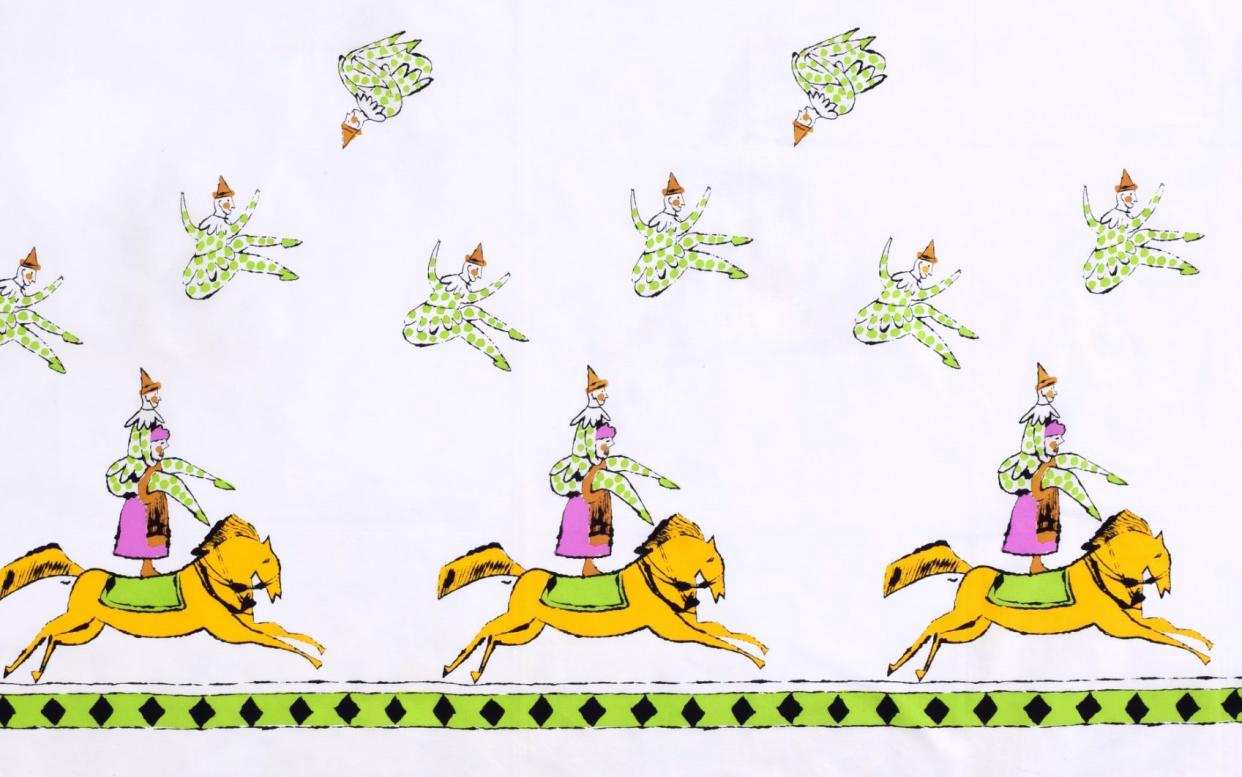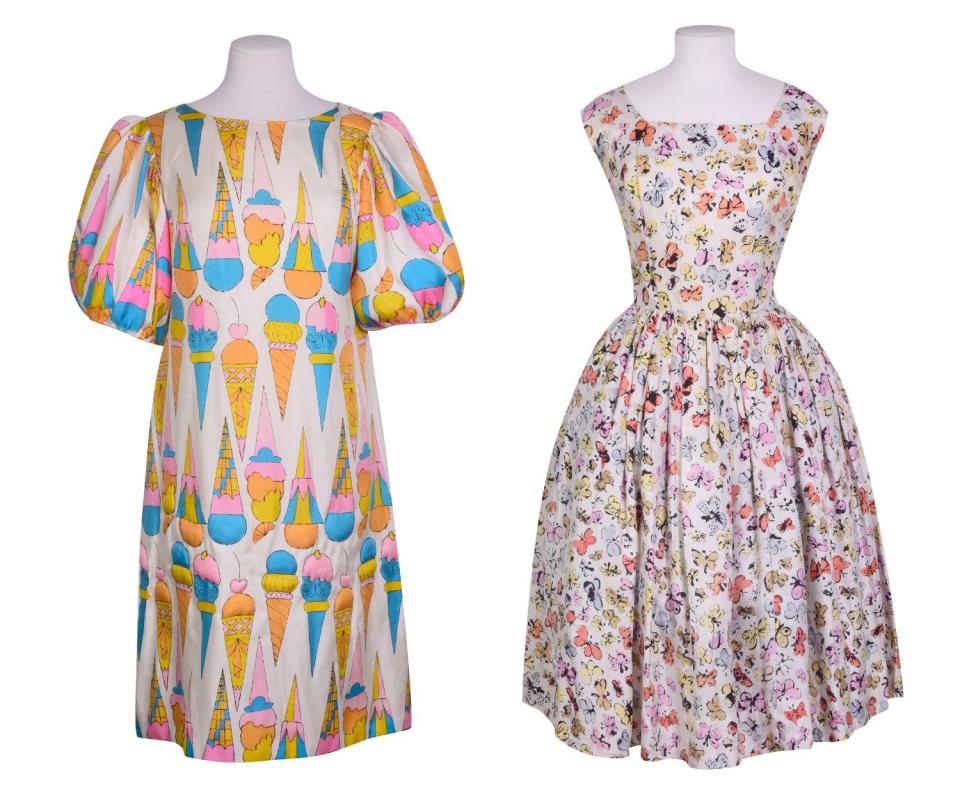Warhol: The Textiles, review: fascinating snapshots of the Pop genius’s art before he was famous

- Oops!Something went wrong.Please try again later.
In 1956, a woman flicking through the Sears summer catalogue could pick quite a special fabric to make a dress. Printed on “sailtone” cotton in a fetching “rose” colourway was a pattern of butterflies, beetles, and ladybirds. The designer responsible for this jumble of red and pink insects was none other than Andy Warhol: the doyen of 1960s Pop Art responsible for the famous silk-screen prints of Campbell’s soup cans and Marilyn Monroe.
Warhol’s work hadn’t appeared in a department-store catalogue through an artist collaboration of the type we might see today (Keith Haring or Jean-Michel Basquiat on a Uniqlo t-shirt, say). After Warhol had moved to New York in 1949, he had found work as a commercial illustrator and one area of this work was textiles. The young designer created repeating patterns for fabrics which were then sold across the USA.
This early textile work is a recent discovery for Warhol afficionados. Only in an exhibition last year at London’s Fashion and Textile Museum were the fabrics shown for the first time, after the curators Richard Chamberlain and Geoff Rayner spent over a decade scouring second-hand clothes shops and websites. Now on display in a joyful show at Edinburgh’s Dovecot Studios, this is the first time they are being exhibited in Scotland.
In his later career – his soup-cans and Coca-Cola bottles – Warhol had a knack for making the everyday remarkable; through repetition and his signature bright-colours and blotted black lines, ordinary objects became the subject of art. This ability started early: in textile patterns from the mid-1950s, he turned his eye to everything from apples to rulers. In one 1956 fabric – here shown on a dress with a quintessential 1950s silhouette – he drew all different kinds of socks: striped, argyle, polka-dot, and baby booties. The result is typically whimsical: from hosiery to garden equipment, nothing could escape his delight in repetition and abstraction.
Yet the most interesting textiles here are the ones that are the least classic Warhol. Away from repeated buttons and pens (or pretzels, or watermelons, or brooms), is a selection of mid-1950s prints that ape the 19th century Art Nouveau movement: stylised flowers, and Aubrey Beardsley-esque curls. These squares of fabric are a snapshot of a different-but-similar Warhol; the same artist who loved bold patterns, before he was so enraptured by the iconography of American capitalism.

In the curatorial text, Dovecot Studios claims Warhol’s textiles are an “art form: pure pattern with little or no brief attached”. There’s a self-consciousness here. These textiles are novel only if they are distinct from an area of Warhol’s work that art historians have long known about: his work as an advertisement illustrator, where he created repeating motifs of everyday objects for sale (including his famous drawings of shoes). But this insistence on the textile’s purity is a misstep: they are unmistakably similar to his advertisement work, and just as concerned with selling to America’s shoppers. Being squeamish about this only detracts from what the exhibition is: a collection of material, consumer objects.
Besides, Dovecot Studios seems not to wince at some aspects of the textiles’ commercialism. They’re selling prints of his designs in the gift shop, after all.
Until May 18. Tickets: dovecotstudios.com; 0131 550 3660

